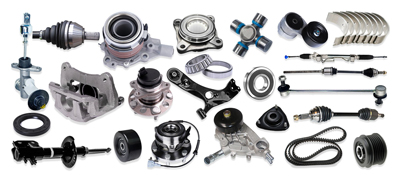The flywheel is a crucial component in many mechanical devices, widely used in automobiles, motorcycles, industrial machinery, and more. Its primary function is to store and release energy, ensuring that the device operates smoothly. However, when a flywheel fails, it can cause a series of serious issues that affect the normal operation of the equipment. This article will explore the common symptoms of a flywheel failure, its potential consequences, and how to prevent such problems.
1. Common Symptoms of Flywheel Failure
The symptoms of a flywheel failure can vary depending on the type of malfunction. Below are some of the most common signs:
- Increased Engine Vibration: When the flywheel malfunctions, the engine’s rotation may no longer be smooth, leading to noticeable vibrations. This is usually because the flywheel is unable to store or release energy properly, resulting in uneven power output.
- Difficult Starting: If the flywheel is damaged or severely worn, starting the vehicle may become difficult. Problems with the connection between the flywheel and the engine can prevent smooth power transmission during startup.
- Clutch Slipping: A flywheel failure can also affect the proper functioning of the clutch, leading to clutch slipping. This means the engine’s power cannot be effectively transferred to the drive shaft, causing the vehicle to stall during acceleration.
2. Causes of Flywheel Failure
There are many potential causes of flywheel failure, with the following being the most common:
- Long-Term Wear: The flywheel is a constantly rotating part in mechanical devices, and over time, it naturally experiences wear. Especially under high load or extended use, the flywheel’s surface may develop cracks or wear, leading to reduced functionality.
- Overloading: If the flywheel is used under excessive load, it can become deformed or damaged internally. For example, when a vehicle is overloaded or the engine runs at high RPMs, it can accelerate the flywheel’s wear and tear.
- Poor Lubrication: Insufficient lubrication of the flywheel can increase friction during operation, leading to accelerated wear. If the lubricating oil in the flywheel system is old or insufficient, the flywheel’s lifespan will be greatly shortened.
3. Consequences of Flywheel Failure
When a flywheel fails, it can result in significant performance degradation of the equipment, and in severe cases, complete failure. The specific consequences include:
- Reduced Engine Performance: The flywheel is a core part of the engine’s power system, and a flywheel failure can prevent the engine from running smoothly, which in turn affects the overall acceleration performance and fuel efficiency of the vehicle.
- Clutch Damage: The flywheel and clutch are closely linked, and a malfunctioning flywheel can cause the clutch to operate unstably, which can lead to the clutch wearing out or even breaking down over time.
- Difficulty in Starting or Accelerating: A flywheel failure can reduce the efficiency of power transmission in the system, making it difficult for the vehicle to start or accelerate properly, thus affecting the driving experience.
4. How to Prevent Flywheel Failure
To avoid the issues caused by flywheel failure, vehicle owners and equipment users can take the following measures:
- Regularly Inspect the Flywheel: It’s important to regularly check the flywheel, especially after prolonged use, to identify any signs of wear or cracks. Early detection can prevent further damage.
- Avoid Overloading: Avoid running equipment under excessive loads, especially in situations where the vehicle is overloaded or the engine operates at high RPMs. High-load operations can accelerate flywheel wear.
- Ensure Proper Lubrication: Maintain the flywheel’s lubrication system in good condition by regularly changing the lubricating oil to prevent damage caused by inadequate lubrication.
5. Conclusion
Flywheel failure can have serious consequences for mechanical equipment, not only causing performance issues but also potentially leading to damage in other parts. Therefore, understanding the common symptoms and causes of flywheel failure, along with taking effective preventive measures, is critical to ensuring smooth equipment operation. Regular maintenance, avoiding excessive load, and maintaining a good lubrication system are key to keeping the flywheel functioning properly for a long time.
By paying attention to these details in daily use, you can significantly extend the lifespan of the flywheel and reduce unnecessary repair costs. If you notice any abnormalities with the flywheel, timely repairs are the best way to ensure smooth equipment operation.

 Twitter
Twitter
 Facebook
Facebook
 Linkedin
Linkedin
 Google +
Google +



